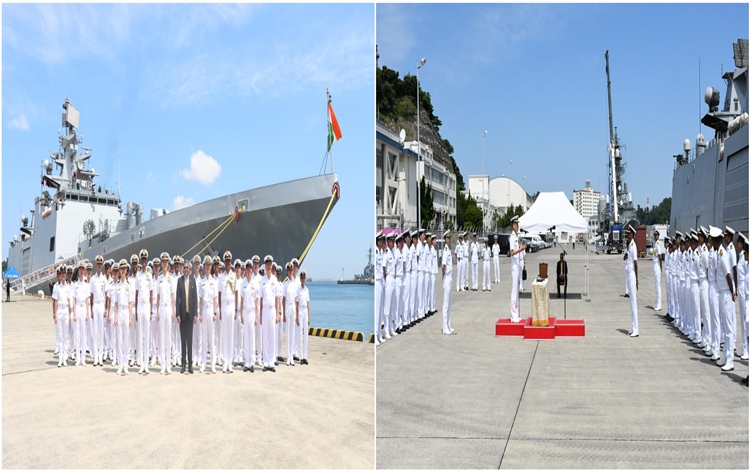The navies of Japan and India have initiated a joint maritime exercise at Yokosuka, marking a significant step in bilateral defense cooperation. This exercise aims to enhance interoperability between the two naval forces, promote regional security, and strengthen maritime partnerships.
Objectives
- Interoperability: Enhance the ability of the two navies to operate together.
- Regional Security: Contribute to the stability and security of the Indo-Pacific region.
- Maritime Partnerships: Strengthen the strategic partnership between Japan and India.
Key Activities
The exercise, spanning several days, includes various complex naval operations:
- Anti-Submarine Warfare: Tactics to detect and neutralize enemy submarines.
- Surface Warfare: Operations involving combat on the surface of the sea.
- Air Defense Exercises: Techniques to protect against airborne threats.
These activities provide both navies with the opportunity to practice and refine their tactics, techniques, and procedures in a combined operational setting.
Statements from Senior Naval Officials
- Admiral Hiroshi Yamamura (Japan Maritime Self-Defense Force):
- Emphasized the strategic partnership between Japan and India.
- Highlighted the exercise as a testament to their shared commitment to peace and stability in the Indo-Pacific region.
- Admiral Karambir Singh (Indian Navy):
- Stressed the benefits of joint training in enhancing operational capabilities.
- Underlined the importance of mutual learning and strengthening ties for regional security.
Cultural and Professional Exchanges
The exercise will also include cultural and professional exchanges to deepen camaraderie between the sailors of both nations. These activities reflect the broader diplomatic and strategic partnership between Japan and India, which has seen significant growth in recent years.
Conclusion
Facing evolving security challenges in the Indo-Pacific, this joint exercise serves as a clear signal of Japan and India’s commitment to working together to ensure a stable and secure maritime environment.
Multiple Choice Questions (MCQs):
- What is the primary objective of the joint maritime exercise between Japan and India?
- A) To showcase new naval technology
- B) To enhance interoperability between the two navies
- C) To compete in naval war games
- D) To recruit new naval personnel
- Which types of operations are included in the exercise?
- A) Space exploration
- B) Anti-submarine warfare, surface warfare, and air defense exercises
- C) Cybersecurity training
- D) Coastal patrol exercises
- Who is the Japanese naval official quoted in the document?
- A) Admiral Takeshi Yamasaki
- B) Admiral Hiroshi Yamamura
- C) Admiral Akira Nakamura
- D) Admiral Satoshi Tanaka
- What did Admiral Karambir Singh highlight as a benefit of the joint exercises?
- A) Improved naval recruitment
- B) Enhanced operational capabilities and mutual learning
- C) Advancement in naval technology
- D) Increased trade opportunities
- What additional activities are included in the exercise to deepen camaraderie?
- A) Sports competitions
- B) Cultural and professional exchanges
- C) Joint naval construction projects
- D) Economic forums
- Why is the joint exercise significant in the context of the Indo-Pacific region?
- A) It is the first naval exercise ever conducted in the region
- B) It signifies the commitment of Japan and India to regional security and stability
- C) It aims to dominate the region’s maritime routes
- D) It focuses on environmental conservation
